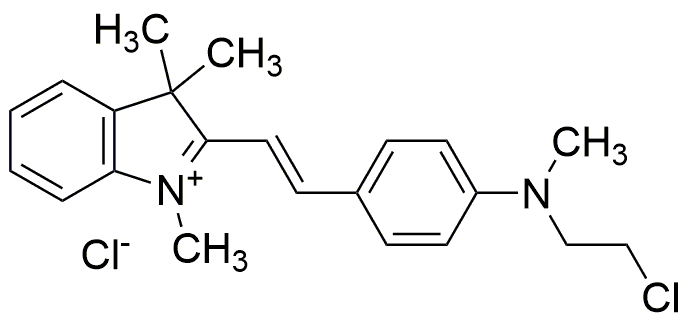Astrazon pink FG is widely utilized in research focused on:
- Dyes and Pigments: This chemical is primarily used in the textile industry to produce vibrant pink dyes for fabrics, ensuring colorfastness and durability.
- Cosmetics: It serves as a colorant in various cosmetic products, providing a bright hue while meeting safety regulations for skin application.
- Biological Staining: In laboratories, it is employed as a staining agent in histology and microbiology, helping researchers visualize cellular structures under a microscope.
- Food Industry: Astrazon pink FG is also used as a food colorant, enhancing the visual appeal of products while adhering to food safety standards.
- Research and Development: Its unique properties make it valuable in developing new dyes and colorants, allowing for innovation in various applications across industries.
General Information
Properties
Safety and Regulations
Applications
Astrazon pink FG is widely utilized in research focused on:
- Dyes and Pigments: This chemical is primarily used in the textile industry to produce vibrant pink dyes for fabrics, ensuring colorfastness and durability.
- Cosmetics: It serves as a colorant in various cosmetic products, providing a bright hue while meeting safety regulations for skin application.
- Biological Staining: In laboratories, it is employed as a staining agent in histology and microbiology, helping researchers visualize cellular structures under a microscope.
- Food Industry: Astrazon pink FG is also used as a food colorant, enhancing the visual appeal of products while adhering to food safety standards.
- Research and Development: Its unique properties make it valuable in developing new dyes and colorants, allowing for innovation in various applications across industries.
Documents
Safety Data Sheets (SDS)
The SDS provides comprehensive safety information on handling, storage, and disposal of the product.
Product Specification (PS)
The PS provides a comprehensive breakdown of the product’s properties, including chemical composition, physical state, purity, and storage requirements. It also details acceptable quality ranges and the product's intended applications.
Certificates of Analysis (COA)
Search for Certificates of Analysis (COA) by entering the products Lot Number. Lot and Batch Numbers can be found on a product’s label following the words ‘Lot’ or ‘Batch’.
*Catalog Number
*Lot Number
Certificates Of Origin (COO)
This COO confirms the country where the product was manufactured, and also details the materials and components used in it and whether it is derived from natural, synthetic, or other specific sources. This certificate may be required for customs, trade, and regulatory compliance.
*Catalog Number
*Lot Number
Safety Data Sheets (SDS)
The SDS provides comprehensive safety information on handling, storage, and disposal of the product.
DownloadProduct Specification (PS)
The PS provides a comprehensive breakdown of the product’s properties, including chemical composition, physical state, purity, and storage requirements. It also details acceptable quality ranges and the product's intended applications.
DownloadCertificates of Analysis (COA)
Search for Certificates of Analysis (COA) by entering the products Lot Number. Lot and Batch Numbers can be found on a product’s label following the words ‘Lot’ or ‘Batch’.
*Catalog Number
*Lot Number
Certificates Of Origin (COO)
This COO confirms the country where the product was manufactured, and also details the materials and components used in it and whether it is derived from natural, synthetic, or other specific sources. This certificate may be required for customs, trade, and regulatory compliance.


